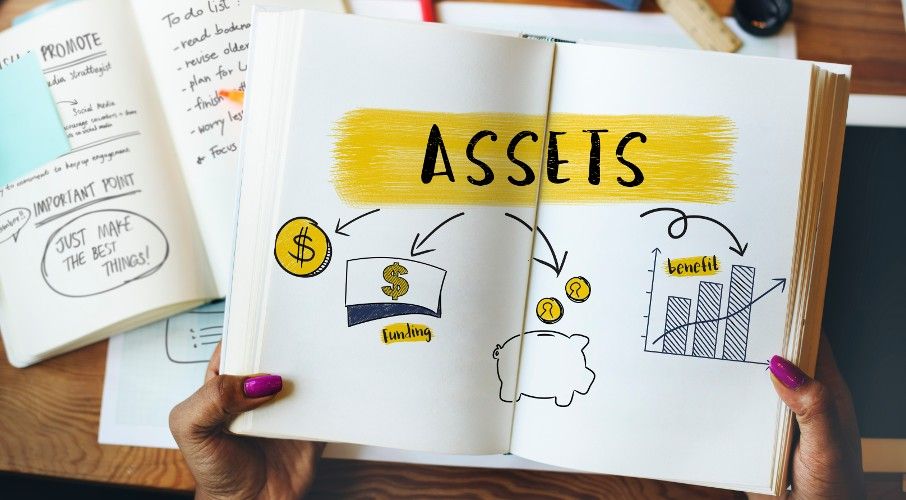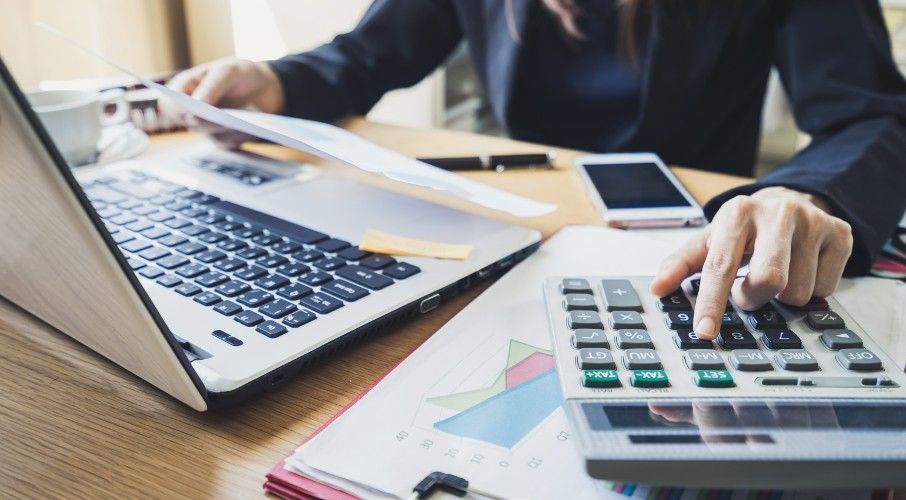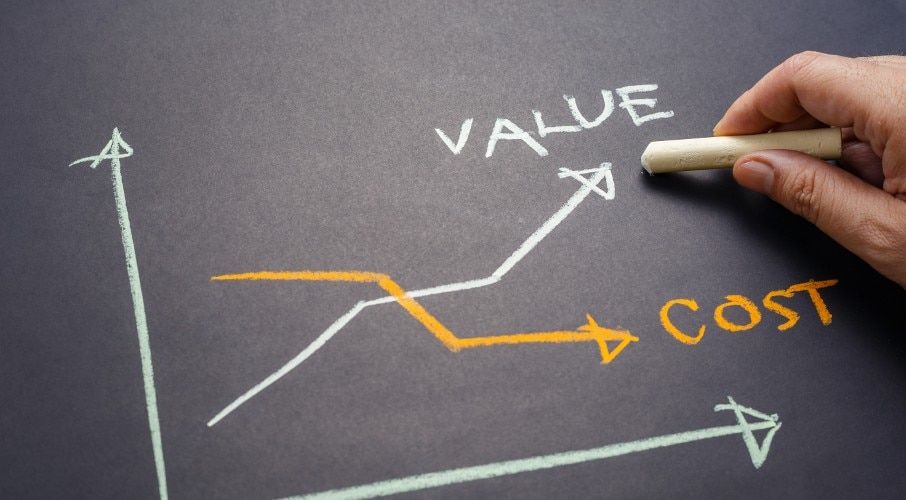Current assets details:

What are Current assets? Definition and example
What are Current assets?
Assets that get easily converted into cash or utilised through the normal operating cycle of the business or within one year (whichever is greater) are current assets. Here, the operating cycle means the time it takes to buy or produce inventory, sell the finished products and collect cash for the same.
Though, the operating cycle of a business usually represents one year. However, there are companies having operating cycles for more than one year. For instance, liquor companies treat their inventories as current assets. This is despite the fact that such inventories remain a part of the ageing process for more than two years.
Current assets list
1. Cash
Cash is the most liquid asset of an entity and thus is important for the short-term solvency of the company. The cash balance shown under current assets is the balance available with the business. This cash can be promptly used to meet its day-to-day expenses. It typically includes coins, currencies, funds on deposit with the bank, cheques and money orders.
Thus, cash appears as the first item under the account heading “Current assets” in the balance sheet as it is the most liquid asset of the entity. This is because all the items in the current assets account category are listed in the order of the liquidity of the assets.
Nestlé case in India
Cash and cash equivalents stood at around AUD 296.92 million as of 31 December 2018 in the Nestlé case study above. The company takes 12 months as its operating cycle for bifurcating assets and liabilities into current and noncurrent. This operating cycle is based on the nature of products produced by Nestlé. Furthermore, it also depends on the time gap between the acquisition of assets for processing and their conversion into cash and cash equivalents.
2. Cash equivalents
Cash equivalents are the result of cash invested by the companies in very short-term, interest-earning financial instruments. These instruments are highly liquid, secure and can be easily converted into cash usually within 90 days. Furthermore, these securities include treasury bills, commercial paper and money market funds. Also, these securities readily trade in the market and the value of such securities can also be readily determined.
Thus, one of the key cash management strategies is to ensure that idle cash not be locked up in unproductive accounts. Instead, surplus cash needs to be put into such marketable instruments.
Nestlé case
The notes to financial statements in the Nestlé case study describe what all elements come under cash and cash equivalents. This explanation is given for the purpose of preparing the Statement of Cash Flows for Nestlé India. Thus cash and cash equivalents include:
- Bank balances
- Bank overdrafts
- Cheques
- Drafts-on-hand, including remittances in transit
- Demand deposits with a maturity period of 3 months
- Short-term investments
3. Stock or inventory
Inventories are the sum of items that are either:
- Stocked for the purpose of sale in the normal course of business (finished goods)
- In the production process and would eventually be sold (work-in-progress)
- Shortly be consumed in the manufacturing of goods that would be sold eventually (raw material)
It is important to note that the items forming a part of inventory are the goods that would be sold in the normal course of business. Thus, goods available for resale form a part of inventory in case of merchandising companies. Whereas, goods available as raw materials, work-in-process and finished goods form a part of inventory in the case of manufacturing firms.
Learn more about the raw materials calculation.
Raw materials consist of goods that are used for manufacturing products. Work-in-process refers to the goods that are still in the manufacturing process and are yet to be completed. Finally, finished goods refer to the items that are completed and are awaiting sale.
Now, cost of inventory includes all the costs that are necessary to bring the goods into such a place and condition that they are further sold. This means cost of inventory includes purchase cost, conversion costs, freight-in and similar items that relate to the above rule. However, the following costs are excluded from the cost of inventory:
- Abnormal waste of raw material, labour and overhead
- Storage costs
- Administrative overheads
- Selling costs
Therefore, various inventory costing methods have to be used once the unit cost of inventory is determined. These methods are used to bring a systematic approach in determining the cost of inventory. This is because each unit of inventory has a different cost.
Nestlé case
Nestlé has taken inventories at cost or net realisable value, whichever is lower. But items such as raw material, packing material and other supplies are not written down below cost. This type of inventory forms a part of inventory to be used in production of finished goods. This is the case if the finished goods using these items are estimated to be sold at or above cost. Methods used for determining cost of inventories are as follows:
Raw and packing material – First In First Out (FIFO)
Stock-in-trade (Goods purchased for resale) – Weighted average
Stores and spare parts – Weighted average
Work-in-progress and finished goods – Material cost + Appropriate share of production overheads and excise duty wherever applicable
4. Accounts receivable
Accounts receivables are the amounts that a company’s customers owe to it for the goods and services supplied by the company on credit. The accounts receivables are presented in the balance sheet at net realisable value. These amounts are determined after considering the bad debt expense.
Now, increase in the bad debt expense leads to increase in the allowance for doubtful accounts. Therefore, net realisable value of accounts receivable is calculated. Net realisable value of accounts receivable is nothing but the difference between gross receivables and allowance for doubtful debts. Thus, it is these accounts receivables at net realisable that the firm expects to collect from its customers.
Now, there can be cases where accounts receivable have to be removed from the balance sheet as such accounts cannot be collected from the customers. Thus, both gross receivables and allowance for doubtful accounts have to be reduced in such scenarios. Furthermore, companies have to identify issues with their collection policies by comparing accounts receivable with sales.
Nestlé case
The trade receivables in Nestlé’s balance sheet for the year ended 31 December 2018 stood at around AUD 23.30 million. Now, the company adopts a different approach to calculate accounts receivables. It provides for the expected credit losses on trade receivables based on the probability of default over the lifetime of such receivables. The allowance is determined after considering (i) the credit profile of the customer, (ii) geographical spread, (iii) trade channels, (iv) vast experience of defaults etc.
5. Marketable securities
Marketable securities are the investments made by the company. These investments are both easily marketable as well as expected to be converted into cash within a year. These include treasury bills, notes, bonds and equity securities.
Thus, these trading securities are recorded at cost plus brokerage fees once these are acquired. However, the value of these securities might fluctuate rapidly. This is because such securities are readily marketable. Therefore, these trading securities need to be recorded at their fair value post the initial acquisition. And the change in their value therefore reflects in the income statement of the company.
Furthermore, the details with regards to such investments are mentioned in the financial footnotes.
Nestlé case
The short term investments in the case of Nestlé stood at AUD 357.24 million for the year ended 31 December 2018. Thus, Nestlé keeps a check on its current assets to get rid of the liquidity risk. It ensures that it has sufficient liquidity to meet its operational needs. Therefore, it invests in short-term investments. This investment is sufficient enough to meet its business requirements within a desired period of time.
6. Prepaid expenses
Prepaid expenses refer to the operating costs of a business that have been paid in advance. Thus, cash reduces in the balance sheet at the time when such expenses are paid at the beginning of the accounting period. Simultaneously, a current asset of the same amount is created in the balance sheet by the name of prepaid expenses.
However, these prepaid expenses eventually turn into expenses from current assets. These expenses get converted at a time the business derives benefit from such an asset as per the matching principle of accounting.
Examples of prepaid expenses include prepaid rent, prepaid insurance, etc.
Nestlé Case
The prepaid expenses form a part of Other Current Assets as per the notes to financial statements given in Nestlé’s annual report. Thus, the prepaid expenses for the year ended 31 December 2018 stood at AUD 1.48 million.
7. Other liquid assets
Other current assets include deferred assets. These assets are created when the tax payable exceeds the amount of income tax expense recognised by the business in its income statement. This can happen in situations where
- Expenses or losses are shown in the income statement before they are actually tax deductible, or
- Revenues or gains are taxable before they are shown in the income statement.
Thus, this deferred tax asset gets reversed over a period of time. It gets reversed at a time when the expense is deducted for tax purposes. Or revenue or gain is recognised in the income statement.
Current Assets Example
Following is the balance sheet of Nestlé India as of 31 December 2018. The balance sheet displays current assets, current liabilities, fixed assets, long term debt and capital of Nestlé as of that date. Please note the following table is an estimate and the original numbers in Indian Rupees were converted to Australian dollars.
| Particulars | 31 December 2018 (AUD) | 31 December 2017 (AUD) |
| Assets | ||
| Non- Current Assets | ||
| Property, Plant & Equipment | $445,602,201 | $485,614,369 |
| Capital Work-in-Progress | $19,527,185 | $17,477,945 |
| Financial Assets | ||
| $136,126,013 | $108,639,458 |
| $7,450,772 | $8,603,470 |
| Other Non-Current Assets | $13,329,346 | $15,449,122 |
| Current Assets | ||
| Inventories | $179,225,036 | $167,516,149 |
| Financial Assets | ||
| $357,341,922 | $258,677,663 |
| $23,126,350 | $16,514,579 |
| $296,763,099 | $268,719,685 |
| $2,095,646 | $1,806,079 |
| $3,320,735 | $5,345,845 |
| $9,743,174 | $7,942,664 |
| Current Tax Assets | $3,498,930 | $1,186,109 |
| Other Current Assets | $4,156,024 | $3,148,109 |
| $1,501,306,432 | $1,366,641,246 | |
| Equity and Liabilities | ||
| Equity | ||
| $17,897,445 | $17,897,445 |
| $664,020,822 | $617,031,212 |
| Liabilities | ||
| Non-Current Liabilities | ||
| Financial Liabilities | ||
| $6,522,674 | $6,522,674 |
| Provisions | $457,537,543 | $425,364,092 |
| Deferred Tax Liabilities (Net) | $10,918,147 | $22,638,170 |
| Other Non Current Liabilities | $94,666 | $111,372 |
| Current Liabilities | ||
| Financial Liabilities | ||
| ||
| $1,998,973 | $974,430 |
| $228,220,773 | $181,780,370 |
| $58,684,811 | $58,283,903 |
| Provisions | $29,188,353 | $16,233,075 |
| Other Current Liabilities | $26,196,389 | $19,783,712 |
| $1,501,193,778 | $1,366,538,696 |
Ratios concerning current assets
1. Current ratio
The current ratio evaluates a company’s ability to meet its short-term obligations typically due within a year. A current ratio lower than the industry average suggests higher risk of default on the part of the company. Likewise companies having too high a current ratio relative to the industry standard suggests that they are using their assets inefficiently.
Current Ratio Formula = (Current Assets / Current Liabilities)
2. Quick ratio
The quick ratio is a more cautious approach towards understanding the short-term solvency of a company. It includes only the quick assets which are the more liquid assets of the company.
Quick Ratio Formula = (Cash and Cash Equivalents + Marketable Securities + Accounts Receivable) / (Current Liabilities)
3. Cash ratio
The cash ratio measures a company’s total cash and cash equivalents relative to its current liabilities. This ratio indicates the ability of the company to meet its short-term debt obligations using its most liquid assets.
Cash Ratio Formula = (Cash + Cash Equivalents / Current Liabilities)
While every care has been taken to ensure the accuracy of the information presented as at 01 May 2023, Intuit is not providing you with professional advice and we recommend you obtain your own professional advice. Intuit is not liable for your use of the information presented.
Related Articles
Looking for something else?

TAKE A NO-COMMITMENT TEST DRIVE
Your free 30-day trial awaits
Our customers save an average of 9 hours per week with QuickBooks invoicing*
By entering your email, you are agree to our Terms and acknowledge our Privacy Statement.














